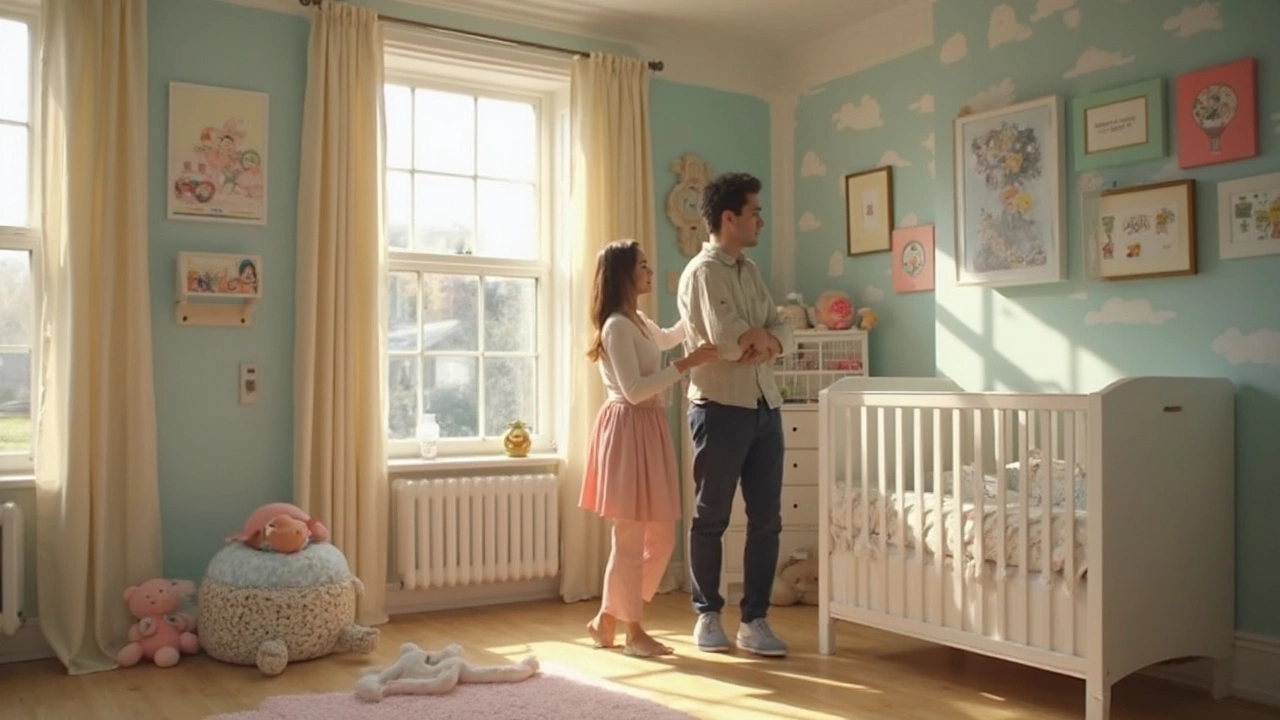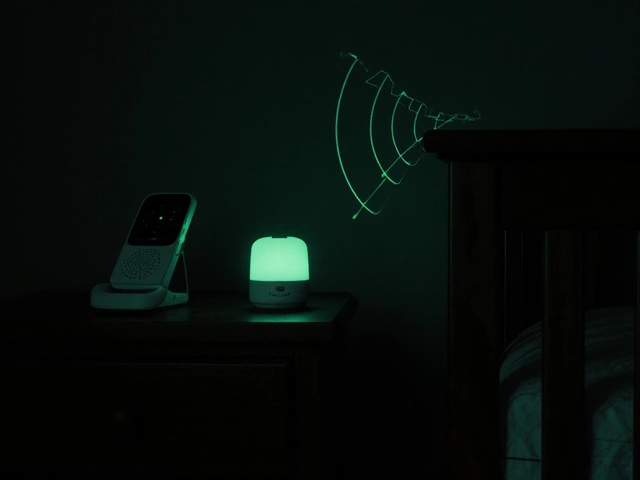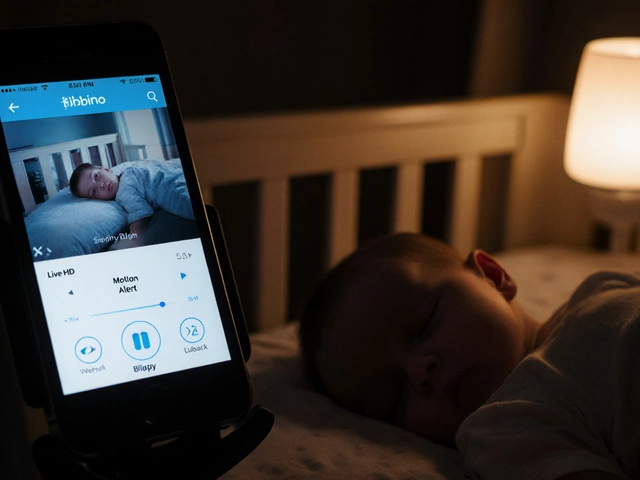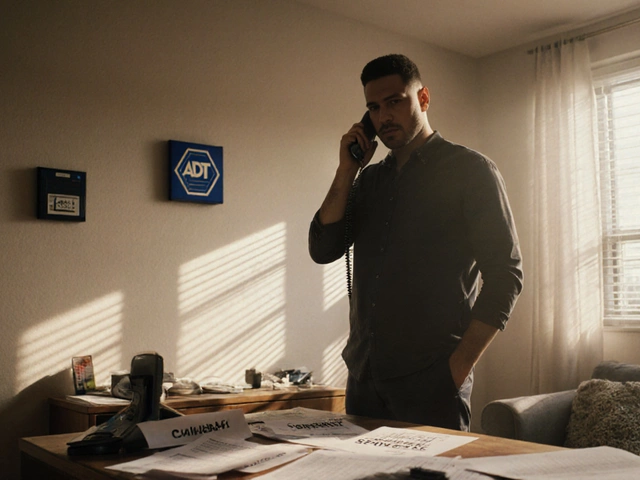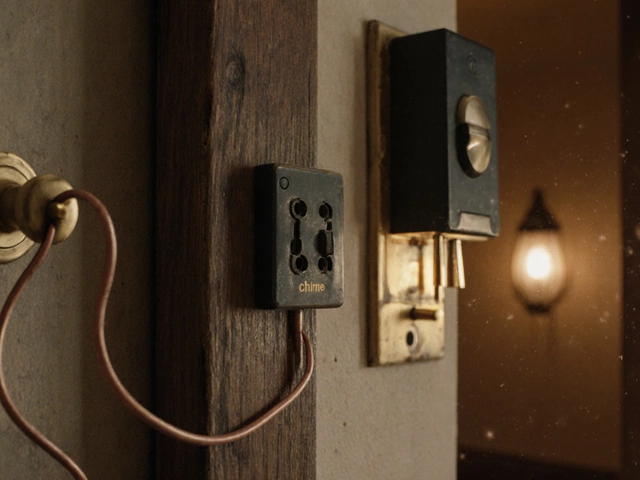Most parenting blogs just say, “it depends,” but honestly—that doesn’t help when you’re standing in a baby goods aisle, staring at dozens of monitor choices. The truth? How many baby monitor cameras you need isn’t about the fancy models or what other people swear by—it’s about your setup and what you want to worry less about at 2 am.
If you’ve got one baby and they always sleep in the same nursery, you might only need a single camera. Simple, right? But let’s say you’ve got twins, or maybe you live in a two-story house and your baby naps upstairs and plays downstairs. Now the math changes—and so does your stress level. Some parents like a camera in every room where the baby spends a lot of time, while others only want to monitor when it really counts—like overnight.
- Why the Number of Cameras Matters
- Single Room vs Multiple Rooms
- Do You Really Need One Camera per Child?
- Camera Placement Hacks
- Features That Change the Game
- When to Upgrade or Downsize
Why the Number of Cameras Matters
This isn’t just about more screens and more noise. The number of baby monitor cameras you set up can totally change how much you stress during naps, bedtime, and, honestly, Netflix binge sessions. There’s a sweet spot—enough coverage to keep you chill, but not so many that your smartphone looks like you’re running security for a bank.
Here’s the deal: baby monitor cameras are all about helping you keep tabs on your kid without running up and down the hall twenty times an hour. Putting a camera in the right spot lets you respond fast if something seems off. Miss a cry or movement because you relied on just one cam from the wrong angle, and now you’re guessing instead of knowing.
Let’s look at how families actually spread cameras out:
- Single-room setup: Most first-time parents with one nursery start with one camera. Easy.
- Multiple kids or twins: You’ll probably sleep better with one camera per crib—or a wide-angle lens that clearly covers both.
- Big home or lots of rooms: If your baby naps in the living room and sleeps in a nursery, two cameras are a game-changer.
According to a recent survey by BabyCenter, about 61% of parents who use baby monitors end up buying a second camera before their child turns one—either because they’ve got a big house or they’re chasing down a toddler and a new baby at the same time.
| House Size/Family Setup | Average Number of Cameras |
|---|---|
| One nursery, one baby | 1 |
| Two-story home, one baby | 2 |
| Twins (same room) | 1 (wide angle) or 2 |
| Toddler + newborn | 2-3 |
| Open floor plan | 1 (with good coverage) |
Missing a key angle, like the crib or play area, can lead to false alarms or worse, missing something important. If you have to keep poking your head in to get peace of mind, your monitor setup isn’t working for you—and it’s time to rethink how many cams you need.
Single Room vs Multiple Rooms
This is where a lot of parents get stuck: Do you need just one camera for the nursery, or more to cover extra rooms? Here’s the deal—if your baby only ever sleeps or hangs out in one room, a single monitor camera is usually all you need. But real life is rarely that simple. As soon as your baby starts napping in different spots, playing in the living room, or spending time in your room, you hit new challenges.
Families in larger homes or houses with multiple floors often use two or even three cameras, so they don’t lose track of what’s happening. The more rooms your baby spends time in (especially on different levels), the more sense it makes to go for baby monitor cameras in each important space.
| Home Setup | Suggested Number of Cameras |
|---|---|
| Small apartment, one nursery | 1 |
| 2-bedroom, baby naps in nursery + parent’s room | 2 |
| House with nursery, playroom, living room | 3 |
If you’re a fan of simplicity, stick to the minimum. If you crave peace of mind (or have a fast, mobile toddler), more coverage can really help. Some top-rated baby monitors let you connect several cameras to one screen. That way, you don’t end up with five different apps or receivers scattered around the house. Check if your monitor supports split-screen or multi-camera cycling; both are huge lifesavers when juggling more than one room.
Quick tip: Before buying extra cameras, walk through your house and make a list of where you actually need eyes on your kiddo. No need to go overboard outfitting every corner—focus on the spots where you’re most likely to need an instant view.
Do You Really Need One Camera per Child?
The short answer is: not always. It really comes down to your house setup and your parenting style. Plenty of parents make things work with just one camera, even if they’ve got multiple kids. For example, if your kids share a room, one well-placed camera can cover both cribs or beds. Angle it in a spot where you can see everyone at a glance. That’s usually all you need for peace of mind, especially if you have a reliable night vision feature.
But what if your kids sleep in different rooms? Then it gets tricky. If you want to keep an eye on both at the same time, two cameras make sense. And if your baby is a super active toddler who wanders into the playroom while your newborn sleeps, having a camera in each main room saves you the hassle of moving the device every day.
Now, here’s a cost-saving tip: there are baby monitors that let you connect multiple cameras to one screen. This way, you get split-screen viewing or can click between rooms with one parent unit. It’s way less hassle than juggling separate monitors. Models like the Infant Optics DXR-8 PRO or VAVA monitor let you add extra cameras as your family grows, so you only pay for what you actually use.
Here are a few times when one camera per child really makes sense:
- Lots of nighttime wake-ups. If both kids are up at odd hours, it makes things simpler.
- Different nap schedules in different rooms—no more running up and down the hallway to check on each kid.
- Older sibling is at the "climbing out of bed" stage and you want to keep tabs on separate trouble zones.
Bottom line? There’s no rule that says every child needs a dedicated camera. The baby monitor cameras you need depend on your daily routine and the layout of your home. Think about how you really use your space before buying extras.
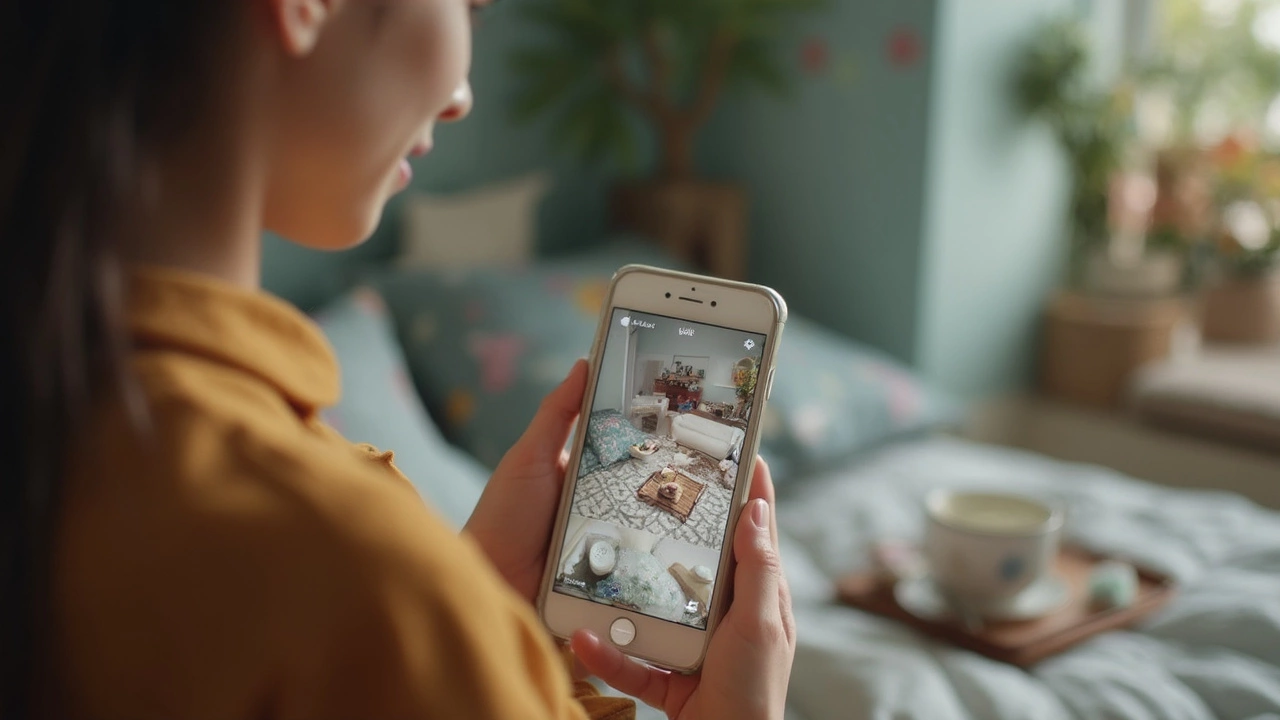
Camera Placement Hacks
Getting the right angle and spot for your camera makes all the difference. Weird camera glare, blind spots, and getting kicked off Wi-Fi because you chose the wrong spot? Let’s skip all that. Here’s what I’ve learned (sometimes the hard way):
- Don’t just stick the camera over the crib. Mount it high—6 to 8 feet up and aimed down at a slight angle works best. This way, you’ll see the whole crib, not just a tiny part or the bars up close.
- Keep cords way out of reach. Babies get grabby fast, so use cord covers or tie them tight up the wall. The CPSC says dangling cords are a big risk for babies behind only to open outlets.
- Don’t put cameras on shelves or wobbly furniture. A dropped camera isn’t just broken tech—it’s a safety hazard too.
- Mind the lighting. Point the camera so lights and windows aren’t behind your baby, or you’ll end up with washed-out video at nap time.
- If your monitor lets you pan and zoom, mount it somewhere central so you can cover more than just the crib—think play corners and reading nooks.
- Double-check your Wi-Fi signal before you drill holes. Thick walls can crush your connection. A simple Wi-Fi app can show your signal in each spot.
Not sure if you’ve covered the whole room? Do a test run with a toy in different spots before committing. Also, if you have more than one child, stacking too many cameras on one outlet can cause outages—use a reliable power strip rated for electronics.
Here’s a quick look at the pros and cons of popular camera spots:
| Location | Pros | Cons |
|---|---|---|
| Wall above crib | Full view of crib, hard for baby to reach | May need extra cord management |
| Corner of room | Wider coverage (crib + play area) | Some blind spots, trickier to mount |
| Shelf across room | Easy to install, quick to move | Wobbly, baby can reach as they get older |
The key? Combine smart placement and safe setup. That way, your baby monitor cameras actually help, not just look cool on the baby registry.
Features That Change the Game
Let’s get real—the right features can save your sanity and sometimes even cash. Before you drop money on a pile of baby monitor cameras, it’s smart to know what bells and whistles will actually make life easier.
Most monitors today offer way more than just a basic video feed. Here’s what might actually matter to you:
- Split-Screen Viewing: If you’re monitoring more than one room or kid, this is huge. One screen, multiple camera views. No need to keep flipping through channels in the middle of the night.
- Remote Pan, Tilt, and Zoom: Get a camera with these moves and you won’t have to walk into the room just to check if the pacifier fell out. For growing kids, this lets you keep up as they start exploring more of the crib—or even the playroom.
- Motion and Sound Alerts: The best monitors send a notification only when there’s an actual fuss. This way, you aren’t glued to the monitor but don’t miss the important stuff either.
- Two-Way Audio: Talk through the monitor if you need to soothe your baby from another room or sneak in a gentle reminder to toddlers who think nap time is a group sport.
- WiFi vs. Local Video: WiFi monitors let you check in from your phone, even if you’re outside. But if you don’t love the idea of feeds going through the internet, stick with local-only for peace of mind.
Also, don’t ignore battery life and power backup. Some monitors lose the feed as soon as the power blinks. Pick models that can switch to battery in emergencies.
Bottom line? You might not need a separate baby monitor cameras in every room if you snag a system with solid features. Sometimes, buying one high-quality monitor with the right options actually feels like cheating—because it just works better for your whole setup.
When to Upgrade or Downsize
Life with kids changes faster than you think, and so do your needs for baby monitor cameras. You might start out with just one setup, but it’s smart to re-evaluate every few months—especially if your little one starts sleeping through the night or transitions to a toddler bed.
So, when should you consider adding more cameras? If you’ve got a second baby on the way, or your toddler and baby nap in separate rooms, more cameras make sense. Also, if your child begins exploring areas you never watched before—like the playroom or basement—extra cameras help keep eyes on what matters. And when your job or life feels more hectic than ever, sometimes having that extra angle (like a camera pointed at the backyard) just makes the whole day smoother.
But there’s no point in going overboard. If your child regularly sleeps in one spot, you might not need to monitor every corner of your home. Once your baby is older and needs less supervision, you can easily downsize your setup. Most monitors let you disable cameras or move them around, so you actually end up using what you paid for. If you find yourself ignoring notifications or rarely checking a certain area, take the hint and scale back.
A simple checklist can help you decide when it’s time to change your setup:
- Your family is growing, or the kids' sleeping arrangements have changed.
- Your baby starts crawling or walking, making new rooms a concern.
- You barely use a certain camera or get tired of false alarms from empty rooms.
- Your old camera has laggy video, spotty audio, or no longer feels useful.
Upgrading can also mean switching to a monitor with split-screen, remote pan/tilt, or better night vision—features that make having multiple baby monitor cameras way less frustrating. Some newer models let you add more cameras as needed, so you don't need to buy a whole new system every time your needs shift. Always look for monitors that are flexible and easy to customize.

